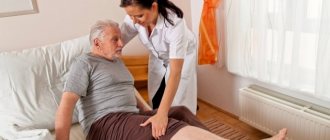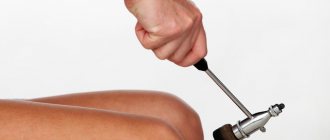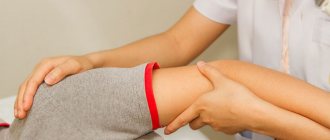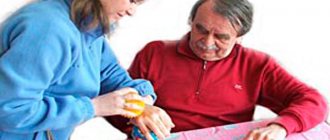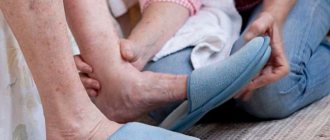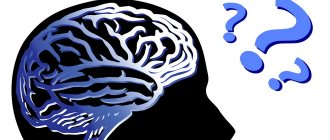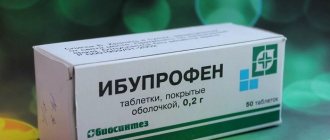Svetlana Shcherbakova
Cardiologist
Higher education:
Cardiologist
Kabardino-Balkarian State University named after. HM. Berbekova, Faculty of Medicine (KBSU) Level of education – Specialist 1994-2000
Additional education:
“Cardiology”
State Educational Institution “Institute for Advanced Training of Physicians” of the Ministry of Health and Social Development of Chuvashia
Contacts
A stroke leads to irreversible damage to brain tissue. This often results in disability. A person who has suffered a stroke becomes physically helpless. The patient loses the ability to perform natural functions. The most common stroke is left-sided, which results in paralysis of the right side of the body. In this case, complete or partial damage to muscle tissue occurs on the side that is dominant in the damaged hemisphere of the brain. Is it possible to recover from a stroke on the right side at home?
According to statistics, paralysis on the right side gives an encouraging prognosis, compared to the left side. The patient, with timely measures taken, can fully restore his health. Right-sided paralysis after stroke accounts for 43% of cases. This type of disease has a characteristic feature - motor aphasia (disorders of the speech apparatus).
Types of paralysis on the right side
Neurology defines two types of stroke with paralysis of the right side:
- Ischemic stroke. Occurs due to blockage of cerebral vessels by atherosclerotic plaques and blood clots. In the area of circulatory arrest, a focus of brain tissue necrosis occurs. The severity of subsequent paralysis and the ability of the central nervous system to compensate for lost functions depend on its location and size. The disease most often threatens hypertensive patients, diabetics, smokers and anyone with high cholesterol, thrombophlebitis, blood thickening, or problems with heart rhythm. Attacks of tachycardia or atrial fibrillation can provoke the formation of blood clots in the heart cavity, which enter the brain vessels with the blood flow. This type of stroke develops over 2-3 days or longer, so it has specific diagnostic features.
- Hemorrhagic stroke. It is characterized by a rupture of the vascular wall and a breakthrough of blood into the brain tissue, which dies from ischemia. It is provoked by a hypertensive crisis, specific aggregate states of the blood, diseases that cause pathological changes in the structure of blood vessels. Hemorrhagic stroke develops rapidly, quickly causing a coma in the patient. This diagnosis entails the most severe consequences.
The practice of neurology shows that strokes with paralysis of the right side are easier and the consequences are eliminated faster. This is explained by the fact that ischemic stroke more clearly manifests the onset of the disease with characteristic signs. Additional time is provided to recognize the illness and transport the patient to a medical facility. The earlier therapeutic actions are started, the less severe the consequences will be. Neurologists call this the stroke race.
Neurologist, director of the chronic pain clinic
According to the Federal State Statistics Service, stroke ranks second in the structure of mortality. This is a dangerous neurological disease, the incidence of which is increasing every year. Statistics show that acute cerebrovascular accident occurs in every third person per 1000 population. Stroke in 60% of cases leads to disability. Due to severe complications, 10% of patients completely lose the ability to self-care. The appearance of persistent paralysis is associated with extensive brain damage.
A stroke requires immediate diagnosis and correct treatment. At the Yusupov Hospital, examinations are carried out using the latest medical equipment: CT, MRI. Thanks to them, it is possible to accurately determine the location of the pathological focus. Doctors at the Yusupov Hospital develop an individual treatment and rehabilitation plan for each patient. The drugs are selected in accordance with the latest European recommendations for the treatment of strokes. Conservative treatment can be supplemented with surgical intervention if indicated. In addition, to speed up recovery, physiotherapy and a course of physical therapy are prescribed.
According to the nature and localization of vascular accidents, the types and subtypes of paralysis are classified:
It develops when the areas of the brain and spinal cord responsible for the function of movement and the state of the neuromuscular complex are damaged. Characterized by specific spastic reactions. With the central form of paralysis, all muscles are affected, which are in constant tension, and when calm they show clonus - rhythmic twitching, mainly in the area of the knees and feet. In many areas, diagnostic reflexes are absent or weakened. Hypertonicity of the muscles causes their painful tightening with a high degree of resistance. This causes painful contractures due to stretching of the tendons. With tension, tremor of the affected limb is often observed. There is a weakening of the facial muscles and articulation disorders. These markers indicate in which part of the brain the pathological focus is located, which subsequently determines the place where restorative measures need to be carried out.
With this type of stroke, a decrease or absence of neurological reflexes develops. The tone in the muscles is not determined, they atrophy, decrease in mass, patients lose the ability to move, self-care and generally do any activity. The main task is to restore the conduction pathways of impulses from the brain and spinal cord to the neuromuscular system. By the nature of the pathological symptoms and the areas of their location, it is possible to determine which segments of the central nervous system are out of order. For example, damage to the anterior horns of the spinal cord in the region of the 6-7 cervical and first thoracic vertebrae causes peripheral paralysis of the arm. In the lumbar region there is paralysis of the leg. There is atrophy of small muscles - facial, oculomotor, sublingual, laryngeal, tracheal muscles. Accordingly, the process negatively affects the ability to swallow, vision, breathing, etc.
Treatment of patients with left-sided hemiparesis after stroke
The most common consequences of a stroke are movement disorders. The volume and area of damage depend on the location of the vascular accident. Paralysis and paresis reduce the quality of life, becoming a serious obstacle to performing everyday activities. Persistent movement disorders lead to disability.
Rehabilitation of a patient with left-sided hemiparesis
The prognosis depends on the capabilities of the patient’s body (age, concomitant diseases), as well as on the severity of stroke (number of dead neurons; number of cells still capable of regeneration; localization of the lesion). Recovery is not always possible. However, treatment prescribed without delay increases the chances of regaining lost abilities.
Briefly about the physiology of movement
A person performs conscious actions thanks to the functioning of neurons that form a pyramidal pathway, through which a signal from the cerebral cortex is transmitted to the muscles of the limbs. Three types of neurons are involved in the transmission of nerve impulses. Central motor neurons are located in the precentral gyrus of the cerebral hemispheres.
The processes from them are directed to the nuclei of the cranial nerves, participating in the innervation of facial muscles, and to the spinal cord through structures united by the concept of the brain stem. Through the system of interneurons, the impulse spreads to peripheral motor neurons located in the anterior horns of the spinal cord.
And their processes transmit it directly to the skeletal muscles.
Most of the nerve fibers that make up the pyramidal tract pass to the opposite side at the level of the medulla oblongata. Therefore, it turns out that the left precentral gyrus is responsible for the movements of the right half of the body, and the right one is responsible for the left.
How do movement disorders occur?
Paralysis can occur when the pyramidal tract is damaged at any level. There are peripheral and central movement disorders. The first arise due to the destruction of nerve fibers when the spinal cord and peripheral nerves are damaged. Central paralysis develops as a result of damage to the neurons of the cerebral cortex, as well as their processes passing through the brain stem.
The main cause of central paralysis is stroke
During a stroke, neurons in the precentral gyrus are affected. That is why paralysis after stroke is called central.
Terminology
It is important to know and distinguish these concepts to understand the described pathology:
- Plegia (paralysis) is a complete lack of mobility in the affected limb.
- Paresis is a weakening of movement, sometimes significant.
- Hemiparesis (hemiplegia) is the development of movement disorders on one side of the body.
Features of symptoms in right-sided stroke
In this form of stroke, the lesion is localized in the right half of the brain, the bodies of the central motor neurons or their processes forming the pyramidal tract are destroyed.
The cause of the lesion may be hemorrhage or an obstruction to blood flow. As a result, an area of necrosis appears, compromising the integrity of the nerve pathways.
Impulse transmission is seriously affected or becomes impossible.
After a stroke that affects the right hemisphere of the brain, speech disorders never occur, since the centers that control this function are located on the left. And this has a drawback, because there is a high probability of late diagnosis of stroke (after all, speech disorders are usually the first and most noticeable symptoms).
Areas of specialization of the left and right hemispheres of the brain
Damage to the right side of the brain is accompanied by the development of movement disorders and loss of sensitivity on the left side of the body. The left arm and/or leg are affected. The facial muscles on the left side of the face are often affected. Clinically, this is manifested by drooping of the corner of the mouth on the left. It should also be noted that the indicated party is unable to participate in facial expressions.
The right hemisphere is responsible for imaginative thinking, creativity, intuition, and the ability to solve several problems at the same time; regulates emotions and imagination.
Therefore, after a stroke, symptoms such as absent-mindedness, depression, anxiety, unmotivated aggression, and inappropriate behavior occur (for this reason, by the way, treatment should not be done without the involvement of a psychotherapist).
Right-sided stroke is also characterized by hearing impairment and loss of visual fields.
After a stroke in the right hemisphere, movement disorders occur on the left side.
Features of treatment of stroke with left-sided hemiparesis (hemiplegia)
Treatment of acute stroke consists of general measures and specific methods of treating the stroke itself, depending on its nature
Treatment includes the basic principles that apply to all forms of stroke:
- Undifferentiated (basic) therapy. Such treatment involves correction of vital functions (breathing and heartbeat), elimination of individual symptoms (convulsions, vomiting), stabilization of pressure, and neuroprotection.
- Specific treatment. Its features depend on the type of stroke. Thus, in case of hemorrhage, hemostatic drugs, agents that strengthen the vascular wall, as well as drugs to prevent secondary ischemia are used. In case of cerebral infarction, great importance is given to antiplatelet therapy and thrombolysis.
In this article, we will take a closer look at the treatment of movement disorders, in particular left-sided hemiparesis.
Correction of movement disorders
Treatment for paralysis of the left side of the body after a stroke includes exercise therapy, massage, and physiotherapeutic procedures. It is necessary to start performing these activities as early as possible. Of course, taking into account the patient's condition.
In the first days after a stroke, bed rest is required. It is important to take measures to prevent bedsores and the occurrence of congestion in the vessels of paralyzed limbs. The patient should not remain in one position for a long time. It is important that he lies not only on the healthy side, but also on the paralyzed side.
The affected limbs should be placed in the correct position. This is done to prevent compression of blood vessels and nerves, as well as to prevent the development of contractures. Central paralysis is characterized by muscle hypertonicity, which must be treated, otherwise the prognosis for the return of motor functions will be unfavorable.
Treatment by position:
- Lying on your back. The left hand is taken to the side, extended, fingers spread. The position of the left leg is different: the limb is slightly bent at the knee, the foot is at a right angle in relation to the shin.
- On the healthy side. The arm is bent at the elbow and shoulder joints, the leg at the hip and knee. Pillows are placed under the limbs.
Giving the patient a special position in bed
- On the side of paralysis. Position of the left arm: extended forward, extended. The left leg is slightly bent at the knee.
The correct position of the patient in bed should be constantly monitored and changed every 2 hours
In case of severe spasticity, treatment with muscle relaxants (Mydocalm, Sirdalud, botulinum toxin) is prescribed.
Paralysis of the left side is also corrected with the help of exercise therapy and massage. You should start with passive gymnastics, when all the movements are made not by the patient, but by the instructor. Later, when the patient regains the ability to move, he needs to be encouraged to perform independent exercises.
Treatment of paralysis of the left side of the body after a stroke involves teaching the patient movement and self-care skills. They usually start gradually. First, the patient is taught to sit up in bed, then to stand up, and only then to walk.
Restoration of movement of the limbs on the left side occurs unevenly. It is difficult to restore fine motor skills and it is not always possible to achieve the previous volume and dexterity of movements. After a stroke, it is necessary for the patient to do special exercises with his left hand: assemble mosaics, puzzles; fingered small objects.
Sensorimotor simulator for rehabilitation after stroke
Massage is another important component, without which treatment of the consequences of stroke will be ineffective. It improves blood flow in paralyzed limbs and reduces muscle tone, which is very important for the prevention of contractures.
The main methods of treatment for paralysis or paresis are exercise therapy, massage, physiotherapy (magnetic therapy, ozokerite, electrophoresis, electrical stimulation, biomechanics).
Prospects for treatment
It is not always possible to eliminate the consequences of stroke. The patient must understand that not all disorders can be corrected. But this is not a reason to give up.
Rehabilitation efforts should be taken seriously. An early start and an integrated approach make it possible to restore lost functions, if not completely, then partially.
In case of persistent violations, the measures taken will facilitate the adaptation process.
Source: https://GolovaLab.ru/insulto/reabilitatsiya/lechenie-insulta-s-paralizaciej-levoj-storony.html
Causes of stroke and paralysis of the right side
The main cause of right-sided paralysis is strokes, chronic and then acute disturbances of blood supply in the structures of the left hemisphere. Nerve tissues are very sensitive to hypoxia. And even if the necrotic focus is significantly removed from the brain capsule, paralysis of the right side of the body still occurs. Most often the hand is affected.
- Physical inactivity;
- Diet with a predominance of animal fats and proteins;
- Metabolism, carbohydrate and cholesterol status disorders;
- Limited or inadequate sleep;
- Abuse of tobacco, alcohol, drugs;
- Chronic or severe one-time stress.
Eliminating at least half of these causes will allow stroke to be removed from the list of major diseases that most often suffer in our time.
Arm paralysis due to stroke
Due to disruption of the passage of nerve impulses, involuntary, uncontrolled contraction of the muscles of the upper extremities can be observed. Paresis or complete immobility is not a final sentence, and it is quite possible to restore the activity of the hand. Doctors prescribe massage of muscles and joints, which is performed by a specialist. In the first stages of recovery, it is advisable to change the position of the affected limb more often.
To get more complete information about the consequences of a stroke, to understand how quickly the face and body recover and what needs to be done for effective rehabilitation and relief from paralysis and paresis, contact a stroke clinic in your city
source
Treatment
Thanks to the efforts of healthcare organizers, the system of stroke treatment in Russia has undergone positive changes. It has become the norm to transport patients with suspected cerebral circulatory disorders to an intensive care bed or neurosurgeon's table within three hours. There are 24-hour vascular centers in all major cities. Specialized structures like the Moscow Yusupov Hospital, which have invaluable experience in treating and rehabilitating the most complex neurological diseases, received support.
Treatment for stroke, when the right side is paralyzed, begins in the intensive care unit, where patients are hospitalized urgently. The treatment regimen provides for the normalization of blood circulation in the brain, restoration of respiratory and swallowing functions, and elimination of the threat of convulsive phenomena. The fight against cerebral edema, the normalization of the body’s water and electrolyte balance, and the metabolic processes of the central nervous system are being actively carried out.
The treatment regimen for hemorrhagic stroke with paralysis of the right side is somewhat different. In this case, drugs that eliminate thromboembolism come to the fore. If treatment is started on time, the blood clot is destroyed and impaired blood flow is restored. Thanks to modern medications, it is often possible to completely avoid the consequences of a stroke.
The patient's condition requires normalization of homeostasis, a decrease in the degree of permeability of the vascular walls and the formation of plasmin.
Fighting bedsores
Bedsores are a dangerous enemy of bedridden patients who have to remain in bed for long periods of time. Bedsores appear in areas that are subject to the greatest pressure - the tailbone, shoulder blades, buttocks, legs, forearms.
The skin here becomes thinner, and zones of necrosis form. The most effective fight against bedsores is prevention. It is important to change body position as often as possible, lay the patient on his side, keep the skin clean, carry out daily hygiene procedures, and treat problem areas with disinfectant and softening solutions.
Bedsores in advanced stages require surgical treatment. There are cases when a patient was saved in intensive care, but then, due to poor care, he died from sepsis that developed from banal bedsores. Nursing after a stroke is exactly the case when an experienced and conscientious nurse is just as important as a doctor. And sometimes it’s even more important.
Complications
Neurologists have to deal with numerous complications of the physical and psychological state of a stroke, which include:
- Gross disturbances of mental, cognitive, speech activity;
- Perceptual inhibition;
- Inflammatory phenomena of the bronchopulmonary, genitourinary system due to congestion in an immobilized patient;
- Depressive states with suicidal statements.
These manifestations require the closest attention and active therapy from specialists in various fields.
Diagnosis of the disorder
Diagnostics are carried out to determine the localization of the disorder to identify the causes of the disease and further prescribe treatment. Pathology affects:
- eye;
- optic nerve;
- auxiliary eye apparatus;
- brain.
Diagnostics involves traditional procedures - ophthalmoscopy, viziometry. Research is also being carried out
conjunctiva, visual acuity, color perception and light beam refraction. Next, a test is carried out containing questions that the patient must answer.
Additional studies are carried out using CT, MRI, ultrasound. If necessary, the doctor can refer the patient for examination to other specialists: neurologist, neuro-ophthalmologist, oncologist, psychiatrist, rheumatologist, endocrinologist, dermatovenerologist,
In the case of strabismus, the disease is diagnosed using coordimetry and diplopic provocation.
Such methods represent the implementation of test vision control. A man looks at a moving light source. The resulting image is transferred to a coordinate map. In this way, damage to any of the muscles is determined.
Forecasts
In modern medicine, forecasts quickly become outdated, new methods and specializations appear. Yesterday's wheelchair-bound or bedridden patients have the opportunity to be restored using IT technologies, developments in biotechnology that create fundamentally new medicines, innovative tools such as exo-skeletons that teach paralyzed people to walk again. Breakthrough ideas are expected in scientific neurology, which has proven that neurogenesis (the production of new neurons even in the elderly) exists, contrary to popular belief that nerve cells do not regenerate. A method currently being tested for growing neurons from a patient's blood cells holds great promise. Neurologists will be able to repair the brain, replacing diseased areas with new ones. And this fantastic tomorrow is much closer than we can imagine.
Today, a favorable prognosis for the disease for many years depends on many factors. And the main one is the right choice of a medical institution and the choice of a doctor.
Brain stroke and paralysis of the right side as a consequence of vascular spasm are conditions that can be restored and corrected. If, as a result of pathological processes in the left side of the brain, the right side of the body is paralyzed, coordination of movements and sensitivity of the limbs are impaired, then the patient requires urgent hospitalization. In the first few hours from the onset of symptoms, you can almost completely compensate for the patient’s condition, which means reducing the risk of complications.
Clinical picture and complaints
Symptoms will directly depend on where the violation occurs. If the oblique eye muscles are affected, then double vision occurs in the form of the location of one object above another.
If the rectus muscles are damaged, it will be parallel. Diplopia is expressed by varying degrees of deviation of the eyes in the opposite direction from the damaged muscles.
This leads to limited or complete absence of eye movement. Often patients, in order to overcome a painful condition, turn or tilt their heads.
Common symptoms of diplopia include:
- double vision;
- difficulties in the process of determining the location of objects;
- frequent dizziness.
Two identical pictures can have different contrast and brightness.
One of them can move horizontally or vertically and be located at a certain angle relative to the second. In the case of infectious diseases, meningitis, tumors, vascular diseases, skull trauma, double vision will be combined with symptoms characteristic of these diseases. In diphtheria, diplopia occurs at the peak of the disease. In the case of botulia, double vision will be one of the primary symptoms.
Types of paralysis on the right side
During a stroke, the sensitivity of the limbs is always impaired, the symptom has its own characteristics. Develop with varying intensity:
- Numbness spreads to the fingers, arm and other parts of the body; the sensation is uncomfortable or painful, often reminiscent of goosebumps.
- It is believed that numbness does not change its intensity, but this is far from true - as the disease progresses, in the absence of adequate therapy, the sensation intensifies, spreading along the right side of the body, increasing the affected area.
Sensations can be classified in various ways according to the intensity and degree of damage to the body.
What types of paralysis are known to modern neurology:
| Hemiparesis | Paralysis of one side of the body muscles is diagnosed with injuries to the head, spinal cord, and is recorded in children with congenital developmental anomalies. Often observed with unilateral damage to the pyramidal tract. |
| Central paralysis | Appears when the cerebral cortex and respiratory neurons are damaged. As a result, muscle hypertonicity is observed. There is no response at all. When palpated, the muscle tissue is warm but firm. There is a limitation in passive and active movements. Often certain parts of the body are affected, but paralysis can affect all limbs, in whole or in part. |
| Peripheral paralysis | Characterizes itself by a complete or partial absence of a reflex. Muscle tone also decreases, which subsequently leads to muscle atrophy. As a result of atrophic processes, muscle fibers grow together and are connected by fibrous formations. Sudden weight loss or depletion of muscle fibers is called atrophy. |
Types of violation
There are such types of diplopia:
- Binocular - characterized by the absence of a correct image of an object on the retina. This occurs due to a displacement of the visual axis of one eye. This type of diplopia is also divided into motor, mixed, sensory, orbital, strabogenic. If you close one eye, the double vision stops.
- Monocular - when viewing an object with one eye, the image is displayed in two different areas of the retina at once. This may occur due to inflammation of the iris or clouding of the lens. When the second eye is closed, double vision does not disappear.
- Paralytic - occurs against the background of paralysis of one or a group of external muscles of the eye.
- Cross - the image is projected crosswise, i.e. the image related to the right eye is displayed on the left and vice versa. This type of pathology causes the greatest discomfort in patients.
Why does the disease occur?
In the case of the development of paralysis during a stroke, various diseases act as unfavorable factors. The list of possible reasons includes:
- arterial hypertension in case of uncontrolled flow;
- atherosclerotic changes in the vessels of the brain or vessels of the cervical spine;
- some diseases of the heart and blood vessels;
- suffered a severe stressful situation, as well as as a consequence of a hypertensive crisis.
The cause of the disease may be the presence of certain problems with blood clotting, certain endocrine disorders. Stroke is often diagnosed in people with global capillary damage; the risk of its occurrence is increased by a sedentary lifestyle and taking hormonal medications.
Irreversible changes in the cerebral cortex and its trunk also occur during prolonged oxygen starvation.
When the lesion is located in the left hemisphere of the brain, symptoms appear on the right. A speech disorder is considered a dubious sign, since it mainly affects left-handed people.
Symptoms and methods of recognition
If the right side is paralyzed, then this should be regarded as a sign of a disease; other signs of the disease may also be of concern:
If after a stroke the right side is paralyzed and the numbness does not subside, then the sensation can remain with the person for a long time. Even rehabilitation will not help correct the situation if the visit to the doctor was untimely.
Treatment and rehabilitation
Treatment is selected by the doctor on an individual basis, its focus largely depends on the patient’s condition and the root cause of health problems.
What is the therapy aimed at:
- normalization of blood pressure indicators;
- localization of the consequences of cerebral hemorrhage;
- restoration of motor activity through rehabilitation procedures;
- reducing the likelihood of relapse.
Reference: The most effective is an integrated approach aimed at normalizing a person’s motor activity and stabilizing his emotional state.
It is almost impossible to completely cure a person who has suffered a stroke followed by paralysis. But the following medications can compensate for his condition to a certain extent:
- Drugs that lower blood pressure.
- During the first 6 hours, administration of fibrinolytic mixtures is permissible.
- It is permissible to prescribe drugs with a vasodilating effect to improve brain nutrition.
The direction of therapy is determined by a neurologist. Upon admission of the patient to the department, treatment begins immediately, with intravenous administration of drugs.
If you have a stroke, you should not self-administer medications or use alternative medicine.
If we are talking about the rehabilitation of a patient, we can recommend taking baths with herbal decoctions. For this purpose, chamomile, calendula, and celandine are used.
After a stroke, in case of complete or partial paralysis, a person may face a problem such as bedsores. The way to deal with them is as follows:
- regularly wipe the patient with special solutions;
- carefully monitor body hygiene, take baths regularly;
- use special mattresses and pillows designed for bedridden patients.
In case of complete or partial paralysis, it is recommended to lift the patient out of bed. Turn him over, sit him down, change his body position.
If the right side is paralyzed due to a stroke, then massage is one of the stages of rehabilitation. It will help restore muscle activity and avoid circulatory disorders in the extremities.
Massage is performed in courses, and in combination with gymnastics it is especially effective. If a person is bothered by pain in his left arm, then a restorative massage of the whole body is performed.
It is believed that in order to avoid relapse of the disease, it is worth sticking to a diet. You will have to give up foods that can cause harm to the body. These are fatty, salty, fried foods rich in trans fats. Drinks that can affect blood pressure are removed from the diet:
For some patients, drinking heavily is not recommended at all, and the diet should be moderate and balanced. Preference is given to products of plant origin.
As a preventative measure, it is recommended to periodically undergo a course of massage and do therapeutic exercises.
Heavy physical activity and stressful situations can lead to a relapse of the disease, so the patient is advised to lead a measured lifestyle.
Prognosis after stroke
First of all, it is worth noting one important point: a stroke is the final condition into which all the factors that have accumulated recently have resulted. These are high blood pressure, atherosclerosis and other vascular diseases, heart problems, and hereditary predisposition. Roughly speaking, if these factors take place in a person’s life, then he should know what this can lead to and take appropriate measures.
If a person does not monitor his blood pressure and blood cholesterol levels, then he is more likely to have a stroke. Therefore, people who are at risk need to prevent the development of this disease. An important point will also be which side of the brain was affected by the stroke. If the right side of the body is paralyzed due to a stroke, the prognosis will be more favorable .
A person’s further life after a stroke will depend on the person’s very mood, that is, whether he wants to recover and return to his previous lifestyle - go to work, socialize, etc. - or do nothing, receive disability benefits and live with his ailments. If he chose the first option, then the chances of a full recovery will be much higher than in the second option. In any case, no matter what a person chooses, he will need to take various medications to prevent the occurrence of a recurrent stroke. These include:
- antiplatelet agents;
- statins;
- drugs to lower blood pressure.
Blood pressure regulation
Patients who have suffered a stroke are advised to constantly monitor their blood pressure levels; therefore, they should always have a tonometer at hand. It is necessary to constantly monitor blood pressure levels throughout the day. The importance of blood pressure levels is due to the fact that with increased values, the walls of blood vessels become more brittle over time and there is a risk of vessel rupture.
The normal value is 120/80 mmHg. With small deviations, for example, 130/80, this will also be considered normal. High blood pressure increases the risk of hemorrhagic stroke. This is its main reason .
If you have high blood pressure, take appropriate medications to regulate your blood pressure. They should usually be prescribed by your doctor. To effectively control blood pressure levels, they are taken in certain dosages and at the correct time of administration. In order to choose the right drugs that effectively act on a particular person, constant monitoring of blood pressure is carried out while simultaneously taking medications that regulate blood pressure. Thus, the effectiveness of a particular drug for humans is determined. The mechanism of action of drugs that regulate blood pressure is to dilate the walls of blood vessels .
Taking statin drugs
It has already been mentioned that high cholesterol levels in the blood cause ischemic stroke. Taking these medications is necessary to prevent the formation of internal cholesterol in the body, and they also prevent external cholesterol from being absorbed. Their use is even more relevant for those people who are at risk of developing this disease. For those who have already suffered a stroke, they are prescribed primarily to prevent the recurrence of a stroke.
Complications and prognosis
After a stroke, a paralyzed arm may hurt; the sensation occurs when trying to perform a movement or if the limb is at rest. The pain gives way to discomfort, cramps (rarely).
The main consequences of a stroke are disturbances in motor and mental function. This is when a person is no longer able to perform usual movements or lead an active lifestyle.
Relapse is also a consequence; the doctor’s recommendations will help you avoid it; you will have to follow them strictly. What factors does the prognosis of the disease depend on:
- speed of seeking medical help;
- timely implementation of treatment procedures;
- the age of the patient and the presence of concomitant diseases.
If you go to a medical facility as soon as possible, the prognosis is regarded as favorable, but even in this case, it is unlikely that it will be possible to completely restore motor activity and return the person to normal life.
Stroke has become a global disease of our century, leading to persistent neurological deficits, speech and motor coordination disorders, and, as a consequence, disability and, in the worst case, death. Due to damage to the left hemisphere of the brain, paralysis occurs on the right side of the human body.
Stroke: rehabilitation and recovery at home Symptoms, treatment and prognosis for hemorrhagic stroke How to provide proper first aid for a stroke Treating paralysis of the left side after a stroke at home Determining the signs of a stroke in a man
What is right-sided hemiparesis? Causes of appearance in children and adults
Right-sided hemiparesis is a disease that requires increased attention; it will not go away on its own. This article discusses the features and nature of the disease, methods of treatment, as well as prevention of right-sided hemiparesis.
About the disease
Right-sided hemiparesis is a pathology that is a right-sided lesion of the muscles of the body.
It is characterized by a noticeable decrease in strength and general motor ability of muscles, and incomplete paralysis of the limbs is possible.
This condition manifests itself due to acquired or congenital pathological changes in the pyramidal tracts and the brain.
Doctors observe deviations from the norm when a lesion appears in the left hemisphere of the brain.
This disease leads to the following consequences for the patient:
- Mobility and the patient’s ability to move independently, as well as to care for themselves independently, are reduced when hemiparesis occurs on the dominant side (right-sided hemiparesis in right-handed people);
- The patient experiences inflammatory changes that are associated with prolonged skeletal muscle cramps . This consequence occurs after serious disorders - intracerebral hemorrhages and strokes;
- A problem arises when trying to follow instructions for physical therapy when the patient is undergoing motor recovery due to limited mobility. This happens when there is spastic increased muscle tone.
In children
In children, this pathology occurs as a congenital disease . The reasons for its occurrence are abnormal functionality and structure of the brain , as well as birth injuries. In medical terminology, this disorder is called cerebral palsy - cerebral palsy.
cerebral palsy appears due to a circulatory disorder in the brain. such a pathology affects the fetus while still in the womb and leads to erroneous development and damage to brain structures.
right-sided spastic hemiparesis
spastic hemiparesis, often called central, occurs when there is inflammation of the brain or cervical spinal cord.
With this disease, stiffness and muscle tension are observed in the limbs of the opposite side of the body. if individual nerves of the spinal cord are subject to inflammation, then hemiparesis is combined with weakness and decreased muscle tone.
this pathology does not immediately become noticeable; it manifests itself over several months. First, muscle tone increases, which creates tension in the arm and leg, a feeling of stiffness arises, and the ability of the limbs to move decreases. then, if no treatment is followed, muscle tone continues to increase.
important! An increase in muscle tone indicates damage to parts of the central nervous system - the brain and spinal cord.
disturbances in movements that are accompanied by spasticity are seen by others from the outside based on distinctive signs - people have difficulty in gait, it acquires special features. Doctors call it Wernicke-Mann gait . this indicates diseases suffered by the brain - stroke and traumatic brain injury.
Symptoms of right-sided spastic hemiparesis are varied. These are speech disorders, fever, cognitive impairment and seizures similar to epileptic ones.
increased muscle tone indicates that the brain and spinal cord are damaged. To reduce tone, the doctor prescribes drugs that relax the muscles. The period of admission is usually long - up to six months, but sometimes longer.
disease according to severity
Doctors determine the severity of various types of paresis on a six-point scale:
- 0 points – complete absence of movement;
- 1 point – minor muscle movements are observed, the joints are not involved;
- 2 points – movement is possible, but in a vertical position, if there is no external resistance. The joints move barely noticeably;
- 3 points – muscles cope with gravity. Joint movements are constrained;
- 4 points – the patient makes movements, while losing a little strength in the muscles;
- 5 points – the patient makes movements without losing muscle strength.
ICD-10 code
In the international classification of diseases ICD-10, pathology is assigned code G81.
Causes
The reasons for the development of hemiparesis vary depending on the age at which it develops, the conditions in which the patient was before the symptoms of the pathology appeared, etc.
in adults
The incidence of right-sided hemiparesis in adults is higher than in children . Most often this is a consequence of injuries, diseases of the left side of the brain.
The causes of hemiparesis in adults are more varied than in children:
- stroke, as well as the formation of a tumor in the brain after a stroke;
- traumatic brain injury;
- encephalitis;
- post-epileptic state;
- hemiplegic migraine;
- diabetes mellitus and the disorders it causes;
- multiple sclerosis;
- atrophic cortical processes.
after a stroke
If after a stroke the entire right side is completely paralyzed, this indicates that a large part of the left hemisphere was affected. Such a stroke has a pronounced clinical picture.
Firstly, these are speech and language deviations. This sign is the first and strongest indicator of a stroke. The patient has slurred pronunciation of words, impaired articulation, and the patient ceases to understand the speech of other people.
Secondly, the patient experiences a loss of speech and verbal memory, he has difficulty writing and reading, and forgets the necessary words and speech patterns.
Thirdly, a clear sign is paralysis of the right side of the body: face, arms, legs.
Fourthly, the patient experiences involuntary and reflex movements of the paralyzed limbs.
Typical problems after a left-sided stroke are:
- Lack of cause-and-effect relationship, violation of logical thinking;
- Inhibited perception and analysis of current events;
- Problems with speech activity, complete loss of some words is possible;
- The patient may lose control over his body, in which case he becomes completely dependent on other people;
- The occurrence of muscle hardening and joint immobility;
- The appearance of bedsores, thrombosis, pneumonia, as the patient is immobile for a long time.
Treatment for stroke in this case is exercise therapy, physiotherapy, restorative massage, as well as surgical and medicinal intervention, classes with a speech therapist.
Diagnostics
When diagnosing right-sided hemiparesis, the doctor is obliged to collect complaints, anamnesis, a full examination of the patient, as well as research using special instruments. Their nature and duration depend on the form of the pathology.
When the cause of hemiparesis is discovered, the doctor performs a computer or magnetic resonance imaging, electromyography, and Doppler ultrasound of the blood vessels of the brain on the patient.
Reference! Children are diagnosed at the age of one to one and a half years, when they develop movement skills and motor disorders become more noticeable.
Treatment
Treatment of hemiparesis in the first year after the onset of neurological disorders is fruitful.
forecast
The forecast is subject to various factors. First of all, the reasons for the severity and course of the disease. Doctors promise a favorable prognosis with diagnosis and treatment, which must be selected correctly. Full recovery is possible if these conditions are met.
The prognosis for hemiparesis received at birth is approached with caution. Mild forms are completely recoverable, but deep hemiparesis can only be partially corrected.
Conclusion
It is important to learn to see the signs and first symptoms of right-sided hemiparesis in order to prevent the disease in time.
This is not a disease that can go away on its own; it requires increased attention not only from the patient, but also from the people around him.
Timely seeking specialized medical help will help to avoid complications when faced with right-sided hemiparesis.
Source: https://doktor-ok.com/zabolevaniya/nervno-myshechnye/dtsp/parez/pravostoronnij-g.html
Symptoms
As a rule, a right-sided stroke manifests itself as disturbances in brain activity and is characterized by:
severe headaches;
With such signs, we can talk about a hemorrhagic form of paralysis with hemorrhage in the left hemisphere of the brain. This causes severe headaches and fainting, accompanied by vomiting, loss of strength and muscle wasting. However, an accurate diagnosis can only be made after a computed tomography or magnetic resonance imaging scan.
Important! The result of hemorrhage in the brain is partial or complete right-sided paralysis; in 80–90% of cases, the pathology leads to disorders of the motor system.
At the first signs of a stroke, you should immediately seek help from a doctor. Timely medical intervention will prevent the development of complications and will be the key to successful rehabilitation.
Ischemic stroke occurs as a result of disruption of the blood supply to the brain due to blockage or spasm of blood vessels. The risk of developing ischemia increases in the presence of hypertension, tachycardia or arrhythmia. You can begin recovery after an ischemic stroke with paralysis of the right side from the fifth day after the attack. The main emphasis is on restoring motor functions through physical therapy, restorative massage, and physiotherapeutic procedures. Drug treatment is carried out with the help of anticoagulants, neuroprotective drugs, thrombolytic agents, and antiplatelet agents.
Complex of provoking factors
The disease occurs as a result of various disorders of the central parts of the visual system and muscle balance, which are formed due to myasthenia gravis. This leads to decreased mobility or lateral displacement of the eye. Diplopia is also caused by neurogenic causes or pathological changes that occur in the orbit.
The disease occurs with myasthenia gravis or paralysis of the eye muscles, which are responsible for the motor mechanism of the organ of vision, and the coordination of movements of the eyeballs is disrupted. Double vision may be a sign of damage to the nerves that control muscles.
Also among the reasons why double vision occurs are:
- displacement of the eye due to disturbance processes in the orbital cavity;
- orbital lesions that occur after injury to the lower wall of the orbit or muscle pinching;
- tumors and hematomas that affect the deterioration of eye mobility or complete immobilization;
- head injuries resulting in damage to the oculomotor nerve;
- dilation of the internal carotid artery, which pinches the nerve.
Diplopia can be caused by a number of serious diseases:
- Intracranial tumors, tuberculous meningitis, multiple sclerosis, stroke are diseases of a neurological nature.
- Rubella, mumps, diphtheria, tetanus are diseases that damage the brain stem due to an infection affecting the central nervous system.
- Intoxication that occurs as a result of taking alcohol or medications.
- Botulism - when the nervous system is damaged, signs of weakening of the eye muscles are imitated.
- Thyrotoxicosis - the eye muscles swell and their movement becomes limited.
- In the case of diabetes, this disease will be secondary and will go away on its own with a likelihood of recurrence.
- Brain surgeries performed to correct strabismus, retinal detachment, and cataracts can also cause diplopia.
- During hysterical attacks and mental neuroses, the occurrence of this disease is very often observed.
